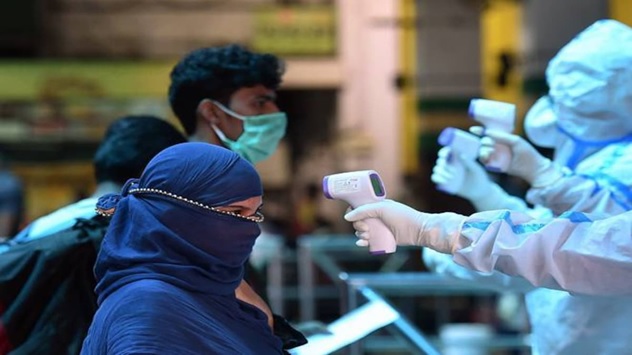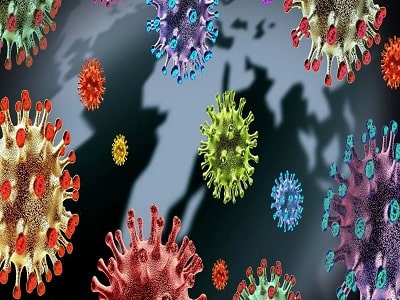New Corona species spreading rate; Variant B.1.617
“Widespread transmission” is the main cause of transmission in most cases of coronavirus. So far, various variants of the SARS CoV-2 virus have been reported around the world during this pandemic. The genetic sequence of the virus, the severity of the disease, and the host conditions (age and sex) are not significantly associated with this widespread prevalence.
Viruses are constantly changing due to genetic mutations, and at any moment a new type of virus may enter the natural cycle of human life. Sometimes these viruses die quickly, and sometimes genetic mutations may persist and newer types of viruses may develop. So far, several variants of the SARS CoV-2 virus have been registered worldwide. And now scientists are researching variants of the coronavirus that is spinning in India, where another brutal wave of CoVID-19 is crashing into people.
The B.1.617 variant was first identified and registered in India in October last year, and in just a few weeks, the coronavirus variant has become a major species throughout India, followed by forty other countries, including the United States and Singapore. And Britain has spread and dominated some of these areas.
In addition to the B.1.617 variant recently observed in India, another rapidly expanding corona variants include B.1.351 (detected in South Africa in late 2020), type P.1 (second wave in Brazil and is immune to vaccination) and strain B.1.1.7 (detected in the UK in late 2020 and has a very high spread rate).
Laboratory evidence shows that newer variants of the SARS CoV-2 virus, B.1.617 variants, are more rapidly spreading and can also cause more severe disease; It also performs better than other available coronavirus variants in escaping immunity and vaccination.
Scientists are researching whether these and other variants could cause the second and third waves of the epidemic, and what kind of dangers they would pose to the world.

The B.1.617 variant, known as the “dual mutant”, has more than two consecutive changes from the older SARS-CoV-2 variant, and little is known about the severity of the disease or the virus’ ability to escape immunity and be vaccinated.
In a genomic and structural analysis of B.1.617 published May 3, 2021, NIV scientists identified eight mutations in the spike virus of SARS CoV-2 virus, two of which are similar to those found in other known types of coronavirus. L452R is known and was first identified in the B.1.427 / B.1.429 variant in California; And three other mutations called E484Q, which are similar to the E484K mutant in the P.1 type, first identified in Brazil in the B.1.315 variant. These mutations make the virus resistant to vaccination.
According to E484K, BMJ is known as an escape mutation, and this mutation appears to help the virus become immune to vaccination.
Genomic data in India show that the B.1.1.7 variant, first recorded in the UK, was predominant in Delhi and Punjab, while in West Bengal there was another new version called B.1.618 and B.1.617 in Maharashtra has been dominant. But after two weeks, B.1.617 has surpassed B.1.618 in West Bengal and has become the main option in many states, and is growing rapidly in Delhi.
Initial modeling by WHO based on sequences provided to GISAID shows that B.1.617 has a very high growth rate, indicating an increased likelihood of virus transmission.
Since then, researchers have identified three subgroups for this variant called B.1.617.1 (which is actually the main subgroup), B.1.617.2, and B.1.617.3, whose genetic structure is slightly They are different and are still exploring these variants and how they affect the epidemic path in the affected countries.

Many of these studies are performed as standard epidemiology – laboratory diagnosis of people with CoVID-19, identification of the variant responsible for causing the infection, and cross-referencing this information with clinical signs and vaccination status. The study found that laboratory B.1.617 performed better in the intestine and lungs than the original type. But it is still unclear whether this feature could lead to more prevalence in the real world.
Animal studies have shown that this variant can be more severe, and mice infected with B.1.617 had more pneumonia than animals infected with other variants. As a result, these studies show that this variant has a greater potential for disease.
In a study conducted at Gupta’s personal laboratory, a sample of the blood serum of nine people who received the Pfizer vaccine was collected and tested for a harmless virus modified by a laboratory mutation of B.1.617. The serum of vaccinated people usually contains antibodies that can neutralize or kill the virus. The study found that the antibodies produced were about 80% less resistant to some of the B.1.617 mutations. People vaccinated with the Covishield vaccine were also found to be re-infected, and most cases were of the B.1.617 variant.
In another study by a German team, the serum of 15 people previously infected with SARS-CoV-2 was tested against variant B.1.617, and the results showed that those antibodies were about 50% lower than others. Strains can neutralize this variant, or in studies of people who received Pfizer, they found that their antibodies were about 67% less able to fight B.1.617.
Although these laboratory studies have shown that complete vaccination cannot be a barrier to B.1.617 variant, scientists believe that vaccination can reduce the severity of the disease and therefore continue to believe that vaccination can be effective in preventing epidemics.
References;


